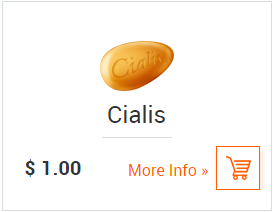Features of long-term use of Tadalafil in patients with ED
Tadalafil is a first choice drug
Phosphodiesterase type 5 inhibitors are the first choice drugs in patients with erectile dysfunction. The article discusses the features of the use of one of them – tadalafil.
According to the results of the conducted studies, tadalafil, which is successfully used to treat ED on demand, can be used for continuous administration 1 time a day for several months and even years.
The use of tadalafil contributes to a significant improvement in ED, and the side effects of taking the drug are comparable to the results of taking a placebo.
Erectile Dysfunction
Erectile dysfunction (ED) is defined as the inability to achieve or maintain an erection of the penis sufficient for sexual intercourse, which is observed for three or more months. In multicenter studies, it was determined that the incidence of ED, especially in older men, is associated with a variety of risk factors that often overlap: age, diabetes mellitus, atherosclerosis, hypertension, obesity, smoking, alcohol abuse, sedentary lifestyle, depression and a relatively low level of education. According to the results of a long-term Massachusetts study on the aging of men (Massachusetts Male Aging Study, MMAS), diabetes mellitus is one of the main risk factors for the development of ED: 35-75% of men with diabetes are diagnosed with ED. ED can also be an early sign of atherosclerosis and coronary heart disease. This relationship between the development of ED and the presence of concomitant diseases is due to a single mechanism – damage to the vascular endothelium.
Microangiopathies lead to a violation of the regulation of the nitric oxide (NO) system. Formed in nerve endings and endothelial cells during sexual arousal, NO activates the guanylate cyclase system, resulting in an increase in the concentration of cyclic guanosine monophosphate (cGMP). cGMP activates a specific protein kinase, under the action of which there is a decrease in the concentration of calcium inside the cell and relaxation of smooth muscle cells of the arteries, which leads to an increase in blood flow to the cavernous bodies and the appearance of an erection.
In the cavernous tissue, under the action of a specific phosphodiesterase type 5 (PDE-5), cGMP passes into inactive 5′-guanosine monophosphate. With insufficient production of NO by the ischemic or damaged endothelium, the concentration of cGMP in the smooth muscle cells of the vessels decreases, as a result of which there is no increase in blood flow to the cavernous bodies and an effective erection does not occur. However, the tissue concentration of cGMP is regulated by both the rate of synthesis and the rate of its destruction under the action of PDE-5. Inhibition of cGMP degradation by phosphodiesterase type 5 inhibitors leads to an increase in its concentration in smooth muscle cells, which promotes erection. Initially developed as nitrovasodilators for the treatment of coronary heart disease, PDE-5 inhibitors showed high tropicity to the endothelium of the vessels of the cavernous tissue.
FDA Approved
Most clinicians begin treatment of ED with the appointment of PDE-5. Three type 5 PDE inhibitors have been approved for medical use in US: sildenafil (Viagra), tadalafil (Cialis), vardenafil (Levitra), the pharmacokinetics of which differ significantly. The half–life for sildenafil and vardenafil is 4 hours, for tadalafil – 17.5 hours. The equilibrium concentration of tadalafil is reached on the 5th day with daily intake and exceeds the initial 1.6 times, so the drug does not have the ability to accumulate, which allows it to be used constantly.
Recently, a number of studies have been carried out proving that the constant intake of tadalafil not only contributes to the maintenance of erectile function, but can also be used to treat symptoms of the lower urinary tract (SNMP). In most men over 50 years of age with ED, the most common disease is benign prostatic hyperplasia (BPH) [10], combined with SNMP (frequent urination, the need for abdominal tension during urination, the inability to delay infection, nocturia, incomplete emptying of the bladder and weak urine flow).
Tadalafil for sale
- Vidalista 20mg
- Tadalista 20mg
- Tadalis sx 20mg
- Tadarise 20mg
- Apcalis® Oral Jelly
- Forzest 20mg
- Tadaga 20mg
- Tadacip-20
Study
K.E. Andersson, in a review article, considers the possibility of using tadalafil for the treatment of SNMP arising from BPH, and analyzes in detail the pathophysiological mechanisms of the development of SNMP. The relationship between the development of SNMP in BPH and ED has been revealed in other studies. The results of six completed studies on the use of tadalafil for the treatment of ED and SNMP indicate: tadalafil, when taken continuously at doses of 2.5, 5, 10 and 20 mg, does not affect the urodynamic parameters – the maximum flow rate, detrusor pressure during injection; in addition, the increase in the level of prostatic antigen when taking tadalafil is comparable to taking placebo and is about 0.2 mg / ml / year. However , the question of the interaction of tadalafil with ?-1-adrenoblockers and blockers 5?-reductases, the use of which, in turn, can lead to an aggravation of ED symptoms.
A multicenter, double-blind, randomized, placebo-controlled trial of taking tadalafil 5 mg once a day is interesting, which took into account the quality of the partner’s sexual life. The primary evaluation criterion for this study was the change between the initial and final indicators of erectile function, including the International Index of Erectile Function (ICEF), questionnaires on the quality of sexual life (SQoL) and the profile of sexual intercourse, the questionnaire on the quality of sexual life (SLQQ). The partners were divided into groups: patients of one group received placebo (n = 78), the other took tadalafil at a dose of 5 mg once a day (n = 264) for 12 weeks. The responses of the men and their partners were collected throughout the study. Compared with placebo, a significant improvement in the effectiveness of erection (p < 0.001) was shown in the tadalafil group, including changes in the ICEF, two- and three-questionnaire profile of sexual intercourse. In addition, against the background of taking tadalafil 5 mg once a day, the quality of sexual life of men and their SQoL partners was significantly higher compared to the placebo group (p < 0.001).
Due to the growing number of studies devoted to the constant use of tadalafil in the clinic, the discussion of side effects and complications associated with taking the drug continues. In his review article, D. Pushkar et al. He gives examples of multicenter randomized placebo-controlled trials of safe daily therapy with tadalafil in men with ED [17-21]. In one of these studies, 184 patients took tadalafil at doses of 5 and 10 mg daily, of which only three men stopped taking the drug – in one case due to headache and dizziness and in two cases due to abdominal pain.
Many men with ED have concomitant pathology on the part of the cardiovascular system, the issues of the safety of therapy for such patients are especially relevant. A multicenter study conducted in 36 clinics evaluated the dynamics of cardiovascular diseases when taking tadalafil at a dose of 2 to 50 mg daily or up to 3 times a week. The study included 12,487 men (mean age 55 years) with ED treated with tadalafil, followed by 5,771 patients-year, and 2,047 men (mean age 56 years) in the placebo group, followed by 460 patients-years. The study excluded patients with premature ejaculation, prosthetics and anatomical deformities of the penis, secondary ED (for example, hypogonadism), unstable angina, myocardial infarction (earlier than 90 days), with systolic blood pressure > 170 or < 90 mm Hg and diastolic blood pressure > 100 or < 50 mm Hg. st. Nitrates were used in exceptional cases. The duration of the study ranged from 6 to 27.2 months.
At the beginning of the study, the structure of concomitant diseases looked as follows: arterial hypertension – 31%, diabetes – 21%, hyperlipidemia – 17%, coronary heart disease – 5%. Cases of adverse development of cardiovascular events (CVTEAEs) were retrospectively analyzed: myocardial infarction, sudden cardiovascular and cerebrovascular death. Patients were also divided into risk groups, including obesity, smoking and age over 65 years.
The CVTEAEs index per 100 patient-years was calculated by dividing the number of patients with this pathology by the patient-years exposure (PY) and multiplying by 100. The incidence rate of myocardial infarction (MI) per 100 patient-years was calculated by dividing the number of patients with MI by the PY exposure and multiplying by 100. The patient-years exposure was determined for each patient and calculated from the date of randomization to the completion date. The exact 95% confidence intervals for the CVTEAEs indicator were calculated based on the Poisson distribution. In all trials, the CVTEAEs index in patients treated with tadalafil was 0.40/100 patient-years (5771 patient-years of exposure) and 0.43/100 patient-years in placebo-controlled groups (460 patient-years of exposure).
The data show that the frequency of serious cardiovascular events in the early stages of tadalafil therapy (i.e. from 0 to 3 months) is comparable to the frequency of CVTEAEs during 27.2 months of therapy. In patients taking tadalafil, the incidence of serious cardiovascular events (CVTEAEs) ranged from 0.17/100 to 0.54/100 patient years according to the results of placebo-controlled and open trials. The incidence rates of CVTEAEs were comparable in men with erectile dysfunction taking tadalafil with those of patients receiving placebo.






